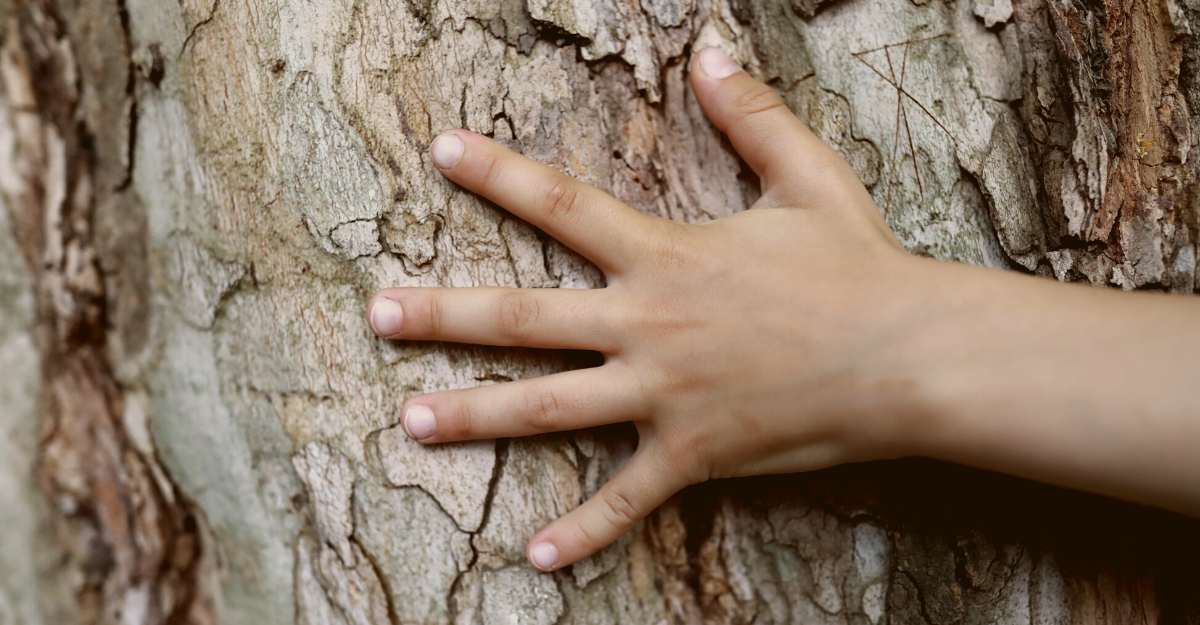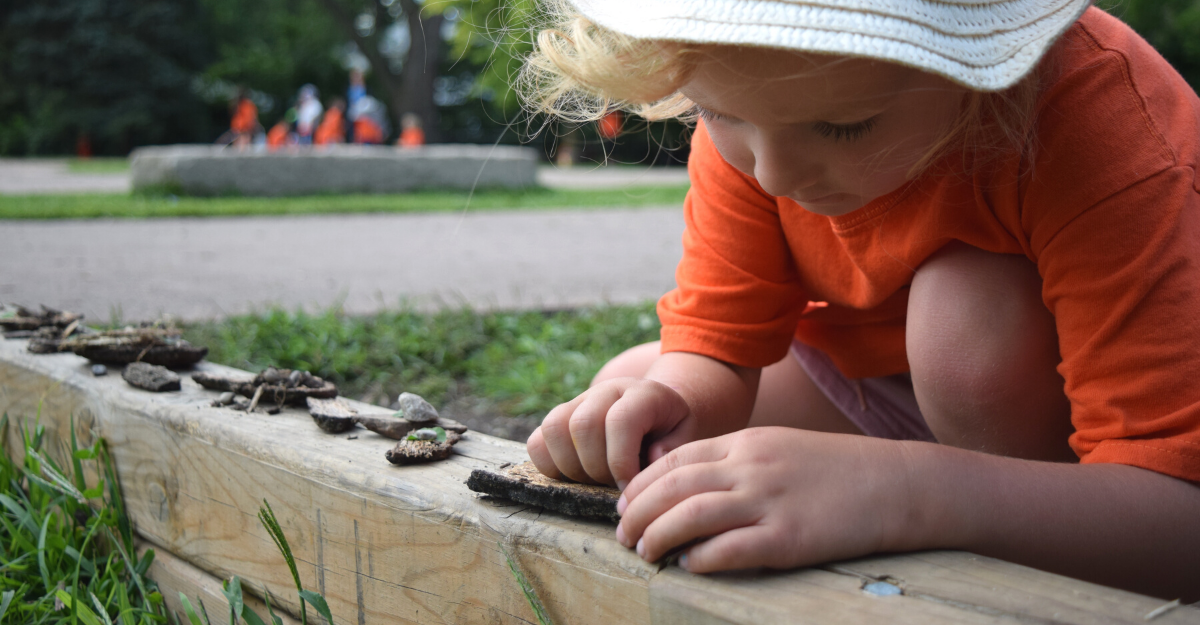Part 2: Adopt a Tree
Resiliency, or the capacity to cope with stress and adversity, is a complex and critical skill. This school year, it’s more crucial than ever. By providing children with experiences that promote play, reduce stress, and encourage connection to the natural world, caregivers can help children foster resiliency.
Over the next few weeks, we’re providing families with activities that can help promote their child’s resiliency. This week’s activity is Adopt a Tree!

Adopt a Tree Tips
This week, spend some connecting with nature and building resiliency by “adopting” a tree together as a family. It could be a tree in your backyard, your neighbourhood, a nearby city park, or local trail.
After you select your family’s tree, invite your child to communicate their perspective, ideas, and wonders in their own nature journal. This nature journal can be a collection of writings, drawings, sketches, photographs, or videos. There are lots of ways to honour your child’s voice by documenting their unique observations of their tree!
● Use your senses. When selecting your family’s tree, let your child’s curiosity guide you. Invite your child to use their senses like sight, touch, smell, and hearing to highlight what’s special about their tree. What does its bark look and feel like? What colours and shapes are its leaves? How is it similar or different from other trees?
● Be curious. Have open-ended conversations with your child and ask what they are noticing and wondering about their tree. Are trees alive? Describe how your tree looks. Will it always look this way?
● Investigate. Learn about your tree with your child. Search for signs to help identify the type of tree you’ve adopted. Collect data, develop theories, and do research answers together.
● Get creative. Work with your child to find the outlet they feel best allows them to express their ideas. Provide them with the materials they need; a journal, a camera, or art supplies. Use crayons and paper and take rubbings of the bark or leaves of your tree. Create your own tree-inspired artwork.
● Revisit. Return to your tree over the coming days, weeks, and months. What changes do you notice? Why do you think that is? Encourage your child to record their observations in their nature journal.

Nature and Resiliency
Spending time together in nature helps children (and adults!) feel more relaxed. Nature is a playground that gives children the freedom to explore at their own pace, with few rules and no prescribed outcomes. Typically, children are more active outdoors, engaging in full-body movement. Family nature adventures also deepen relationships between children and their caregivers. All of these factors have a positive impact on children’s mental health.
The act of adopting a tree helps children develop a sense of belonging and connection to their world, their neighbourhood, and the environment. When children practice communicating their ideas in their nature journal, they are practicing processing their emotions. They are learning to be aware of their own thoughts, feelings, and body. This practice helps children in times of adversity, when processing and understanding their own feelings may be more difficult. By honouring your child’s voice throughout the activity, you are showing them their perspective has value and helping them develop self-confidence.
Resiliency Continued
This is Part 2 in our Building Resiliency series.
● Forward: Read Part 3
● Backward: Read Part 1
________________________________________
Jessie Collins, OCT
Education Specialist, London Children’s Museum
Kristen Palumbo
Teacher Candidate and AFE Placement Student, Western University

